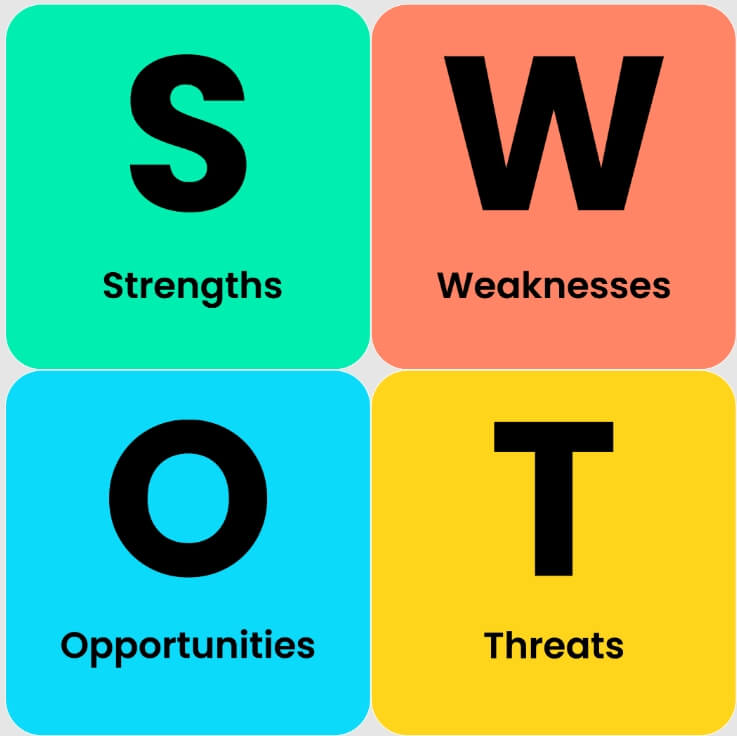In brand communication strategies, opportunistic marketing is favored for its potential low cost and high return. By aligning with trending events, it offers brands a shortcut to connect with a broad audience. However, this strategy is not without risks, as brands can easily find themselves in public relations crises if not handled carefully. This article will reveal the value and benefits behind opportunistic marketing, explore its six common approaches, and emphasize the "three degrees" principle that should be considered during its execution.
Opportunistic marketing is a common tool for brands, and many brands are keen to use it.
Some brands have leveraged opportunistic marketing to achieve remarkable results, gaining significant exposure, recognition, and goodwill with minimal investment. However, other brands have made small missteps and ended up with a tarnished reputation. While they may attract short-term attention, the negative impact on their public image can lead to a detrimental effect on their brand reputation.

For instance, Chery’s attempt to capitalize on the news of a Mercedes-Benz owner cutting in line and smashing a car backfired after the incident took a surprising turn, leading to ridicule. Durex faced backlash for marketing during the heavy rains in Henan, with critics accusing them of being opportunistic. More recently, the car company Neta tried to use the Wu Yifan incident to create a buzz around a product release, but was criticized for promoting vulgar values and breaching social ethics.
These are classic examples of opportunistic marketing gone wrong.
So why do some brands succeed while others fail in opportunistic marketing? What lies behind these successes and failures?
Today, let's discuss the reasons why brands favor opportunistic marketing, explore six common ways to implement it, and the "three degrees" principle to be mindful of when executing this strategy.
01 Why Brands Favor Opportunistic Marketing
First, let's understand what opportunistic marketing is.
Opportunistic marketing involves embedding the goal of sales within marketing activities and integrating product promotion into a context that is enjoyable for consumers. This context, referred to as the "momentum," could be a current hot topic, a social event, or a widely observed phenomenon such as holidays or specific events.
For brands, the core of opportunistic marketing lies in "borrowing" — that is, associating the brand with these trending topics to capture consumer attention, increase brand exposure, and ultimately boost sales. In other words, it aims to enhance the brand's visibility, reputation, and image by riding on the momentum of an event, public sentiment, or public interest, leading to the promotion of products or services.
The reason brands favor this type of marketing is that it can achieve subtle yet powerful results, akin to "a little effort yielding a big return." By leveraging public opinion and current trends, brands can quickly increase exposure and user interaction, reduce marketing costs, improve their brand image and customer loyalty, and create lasting impressions that quietly influence consumers' minds, leading to better marketing outcomes for both brand building and product promotion.
With small investments yielding great returns, why wouldn’t brands embrace this strategy?
02 Six Common Approaches to Opportunistic Marketing
Currently, many marketing professionals oversimplify opportunistic marketing as simply "riding on hot topics," focusing mainly on the aspect of communication. However, this view is somewhat narrow. Opportunistic marketing is a multi-dimensional and layered strategy. Specifically, it can be categorized into two main directions: leveraging external momentum and utilizing internal momentum. There are also various approaches from product, pricing, channel, and promotion perspectives.
For example, during the Olympic Games, brands can capitalize on the excitement of sports, details about medals, and athletes' achievements to subtly introduce brand or product information. This is a classic example of leveraging external momentum. In sales, bundling new products with popular items within the brand to attract attention and direct consumer experience is an example of leveraging internal momentum.
In fact, what marketing professionals commonly refer to as opportunistic marketing often involves capitalizing on external trending events or hot topics, such as the Olympics or other forms of "riding the wave." Even within this definition, there are different ways to think about and execute opportunistic marketing.
Specifically, leveraging external hot topics for marketing can be divided into the following six approaches:
Holiday-based Opportunistic Marketing
Many people are familiar with tools like "marketing/PR/advertising calendars," which list holidays and potential events that can be leveraged for marketing throughout the year.
These holidays may include national holidays (e.g., Chinese New Year, Labor Day, Mid-Autumn Festival, National Day), Western holidays (e.g., Christmas, Easter, Mother’s Day, Father’s Day), industry-specific commemorative days (e.g., Nurse’s Day, Journalist’s Day, WWII Victory Day), and commercial promotional days (e.g., 618, Double 11, Women’s Day, etc.).
Holidays are closely related to people’s daily lives, often linked to emotions of celebration and reunion, making them highly effective for positive associations. Additionally, these dates can be planned in advance, allowing brands ample time to strategize.Therefore, holiday-based opportunistic marketing is an essential tactic that brands must master. At a minimum, brands should prepare promotional activities or communications for these holidays. Innovations in product design, user interaction, or creative communication during these times can make holiday marketing even more effective.
Social News/Political Trend-based Opportunistic Marketing
Social news includes hot topics involving daily life, such as disputes over public behavior, corruption scandals, or other issues like food safety. Political trends could include government policies or reforms, such as changes in family planning, housing regulations, or political events.
These topics often receive intense public attention and, when leveraged appropriately, can enhance brand visibility and convey positive brand values, contributing to greater brand recognition and reputation. However, brands must tread carefully, as such issues can spark heated debates, and aligning with certain issues could lead to backlash.Entertainment-based Opportunistic Marketing
"Entertainment until death" has become a principle in media. People need entertainment to break the monotony of their daily lives, and the public's thirst for gossip only fuels this. Entertainment news is often one of the most followed types of hot topics. With the rise of celebrity endorsements, entertainers, with their massive fan bases, have become preferred figures for brand endorsements, making entertainment-based opportunistic marketing a staple in brand strategies.
Even brands without celebrity endorsers should recognize the potential in entertainment and leverage the buzz around celebrities, entertainment events, and gossip to create marketing opportunities.Sports-based Opportunistic Marketing
Sports, like entertainment, are an important area of cultural consumption and have become increasingly popular. Sports stars enjoy a similar level of attention to entertainment celebrities. Moreover, the sports world often has a cleaner, more positive image, making it a safer area for leveraging hot topics.
Key sports events such as the Olympics, the World Cup, or the World Championships can be prime opportunities for brands to capitalize on.Vertical Industry Hotspots-based Opportunistic Marketing
"Every industry has its own hot topics." As society becomes more specialized, industries generate their own news and hot topics, which can provide valuable opportunities for brands. For example, in the ride-hailing industry, brands may use incidents like a passenger tragedy to create a moment of buzz. However, this approach requires sensitivity and an understanding of the industry dynamics.Disaster-related Opportunistic Marketing
People naturally respond to disasters with empathy and care. In times of crisis, brands may seek to capitalize on their social responsibility. However, if done insensitively, this can backfire. Brands should first focus on actual aid efforts, like donations or volunteer work, before attempting any marketing.
03 The "Three Degrees" to Watch in Opportunistic Marketing
To avoid pitfalls and achieve successful results, brands should pay attention to the following three "degrees": angle, scale, and intensity.
Angle
The angle refers to the choice of hot topics and how a brand enters the conversation. Avoid leveraging negative news or overly controversial topics, even if they attract attention. Brands should also ensure that their association with entertainment or sports figures highlights their values and ideologies, not just the celebrity's image.Scale
The scale of the marketing campaign influences its effectiveness. For example, a holiday campaign with just a single poster may only capture the attention of a small group, while a full-fledged campaign with extensive resources invested can generate wide-scale attention and customer acquisition.Intensity
Opportunistic marketing requires appropriate resource investment to create the desired impact. A large-scale campaign may require a significant budget to ensure it reaches the right audience. The goal is not to save costs, but to maximize the marketing impact within a reasonable budget.
04 Conclusion
Opportunistic marketing is an art that combines insight, strategy, and social responsibility. Successful execution can significantly boost a brand’s visibility, recognition, and reputation, all at a relatively low cost. However, it requires precise control over the "angle," "scale," and "intensity" to avoid missteps. By carefully navigating these aspects, brands can create meaningful and impactful marketing that resonates with consumers, fosters long-term growth, and achieves brand objectives.







